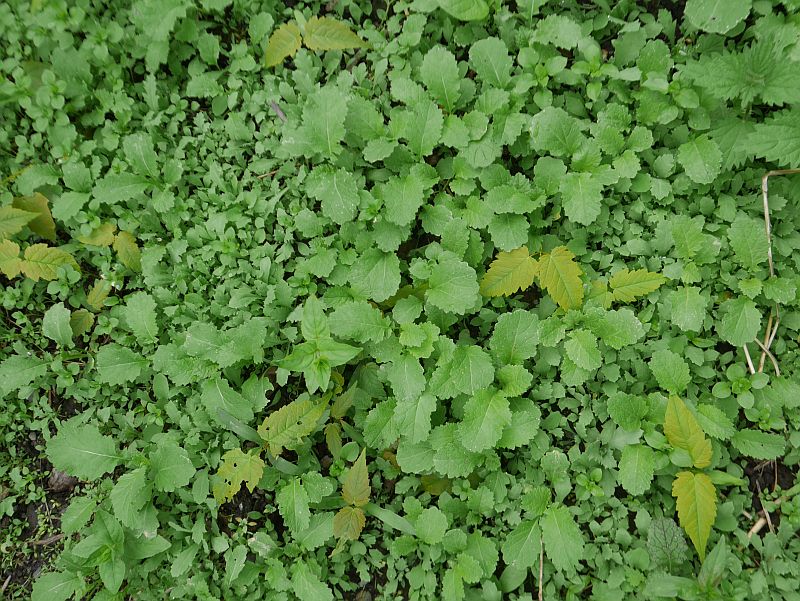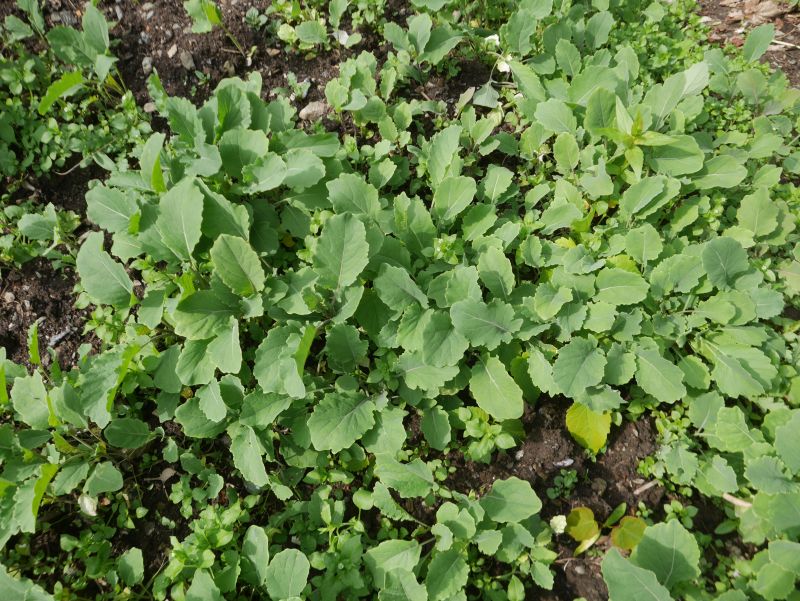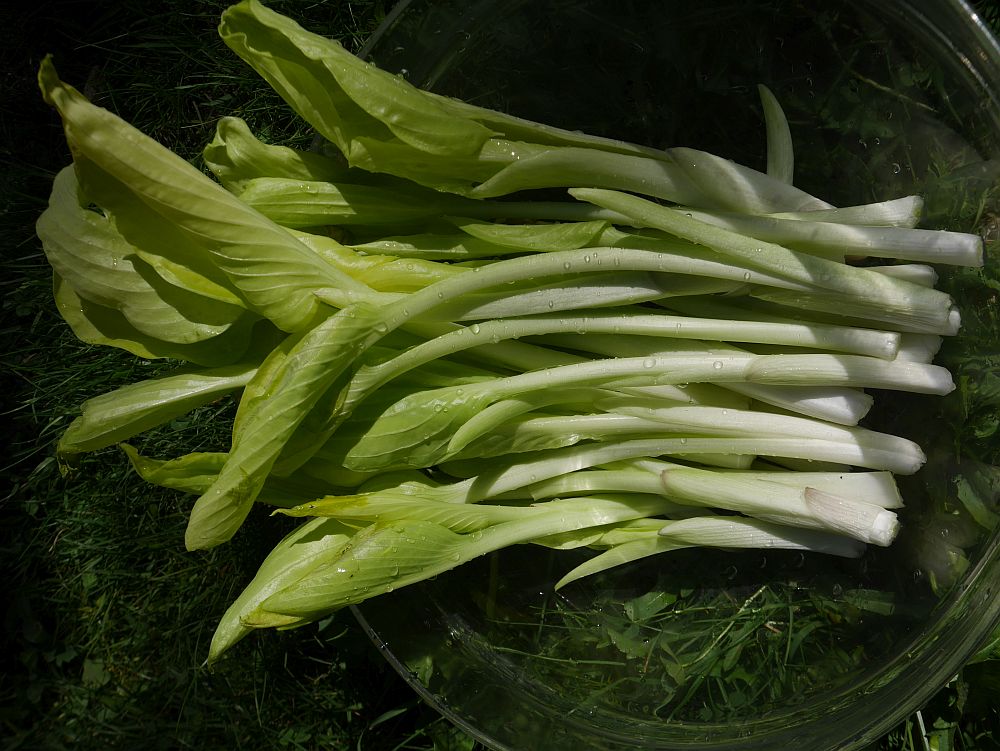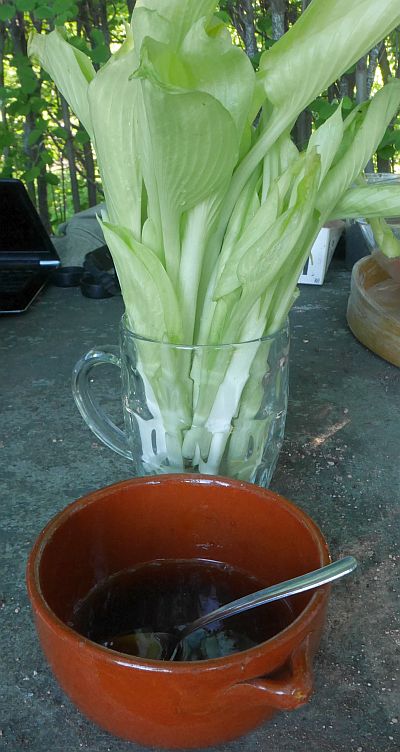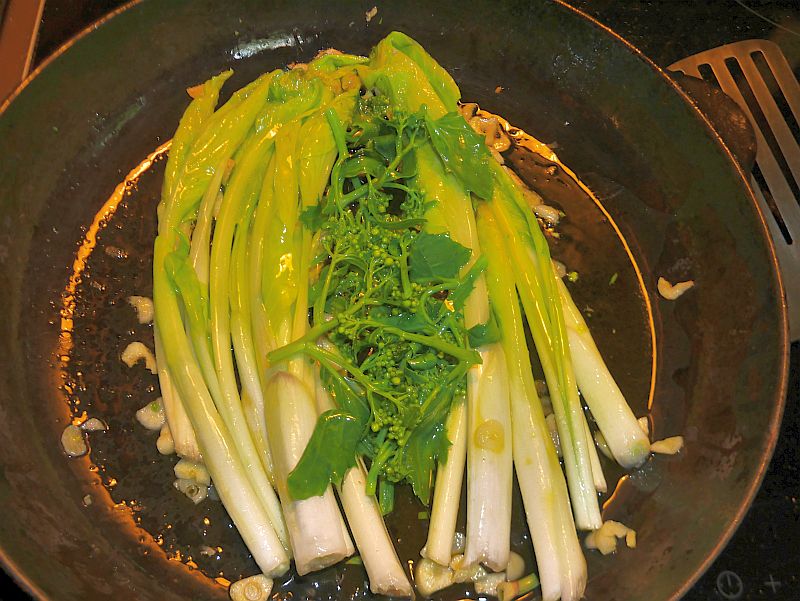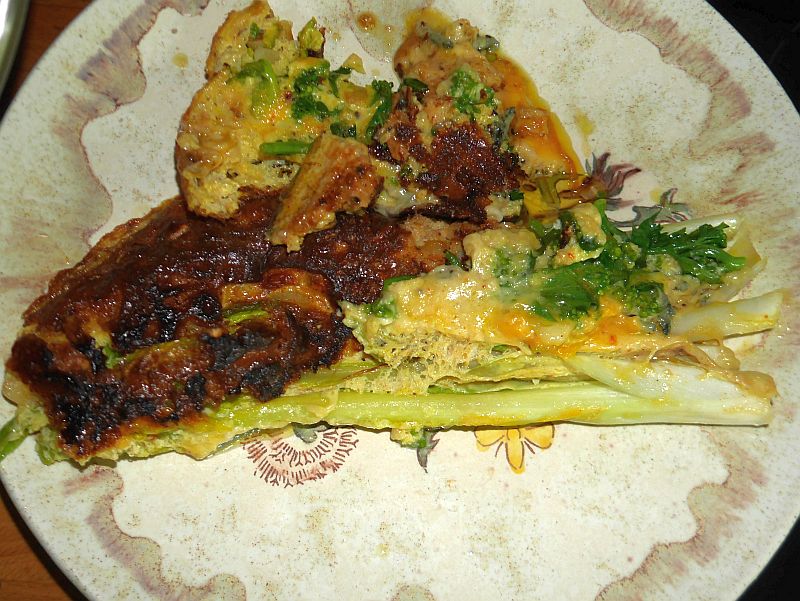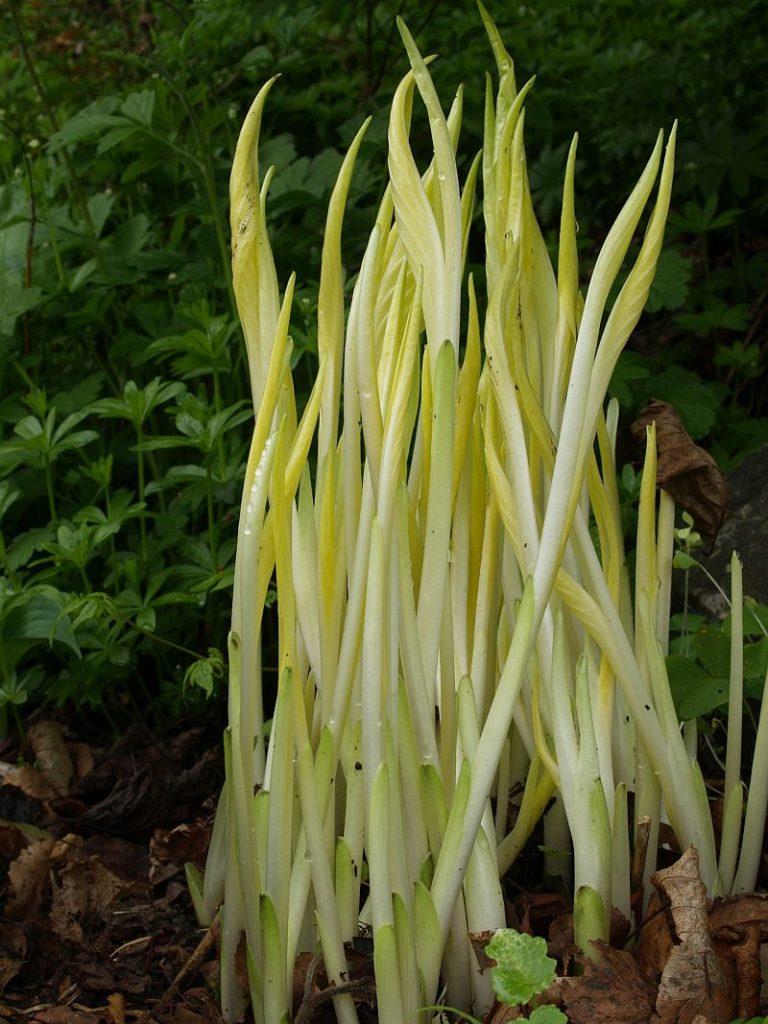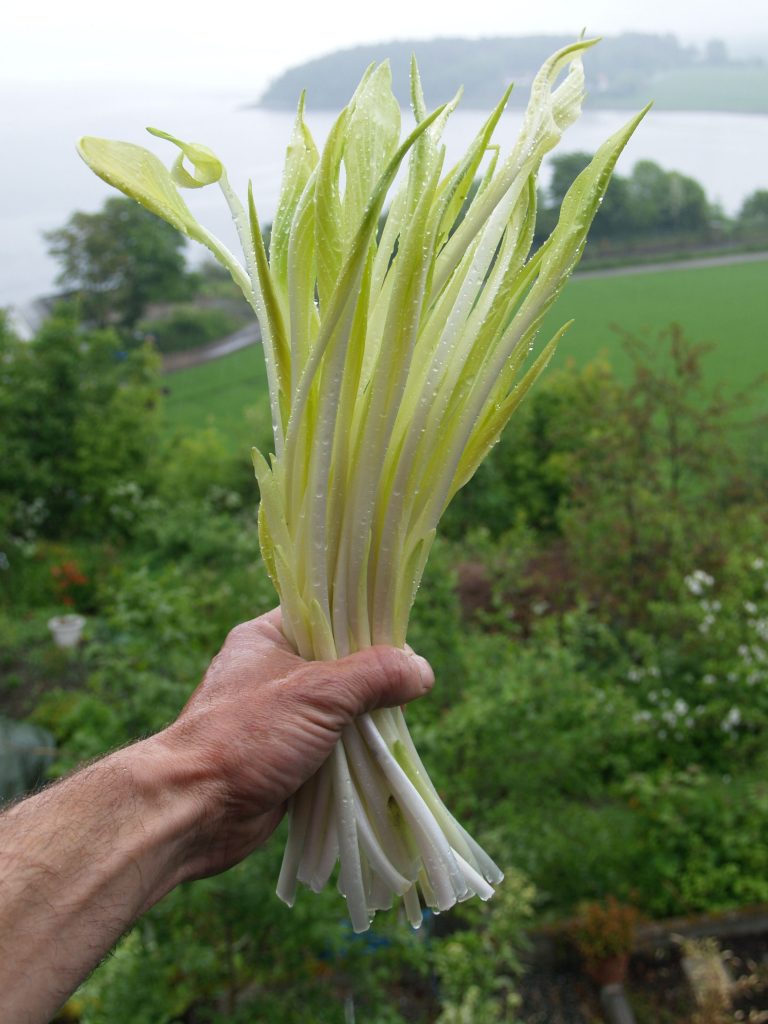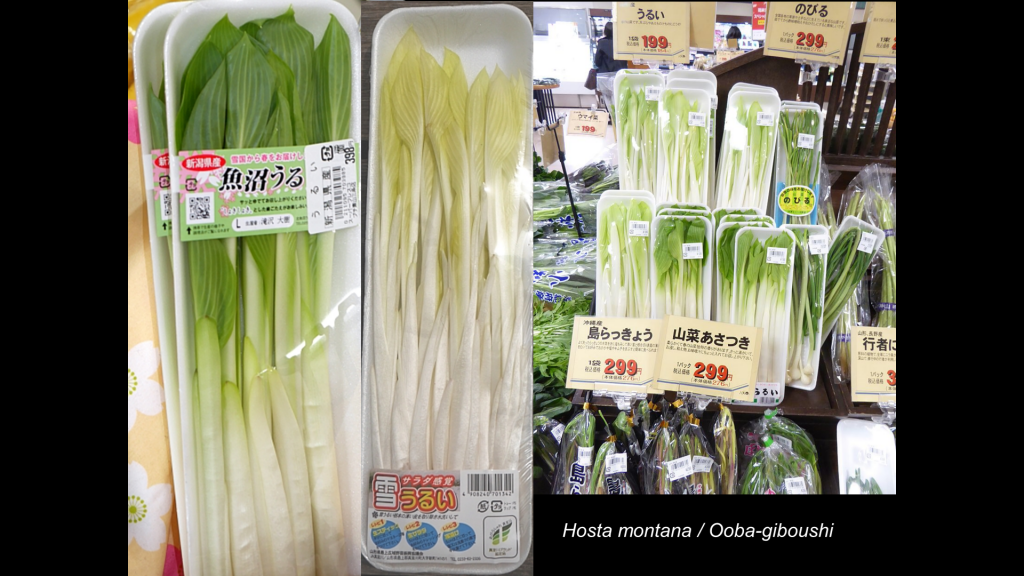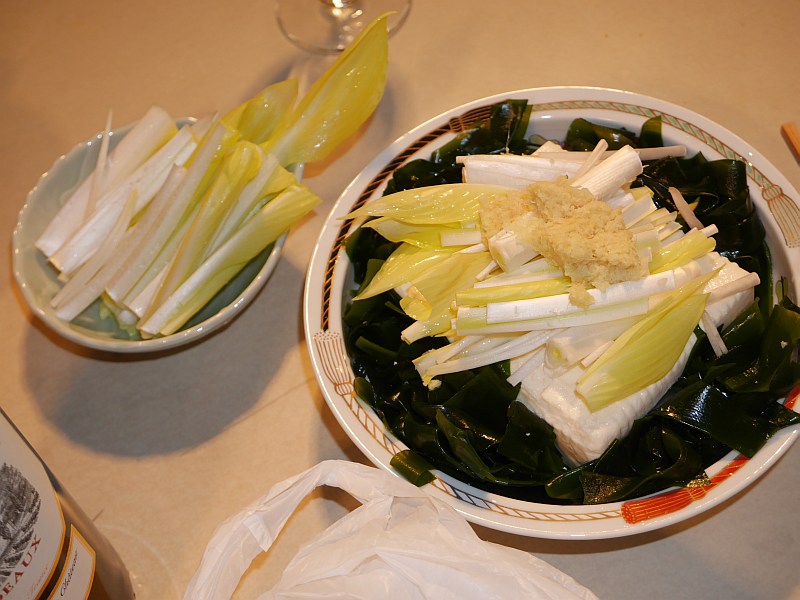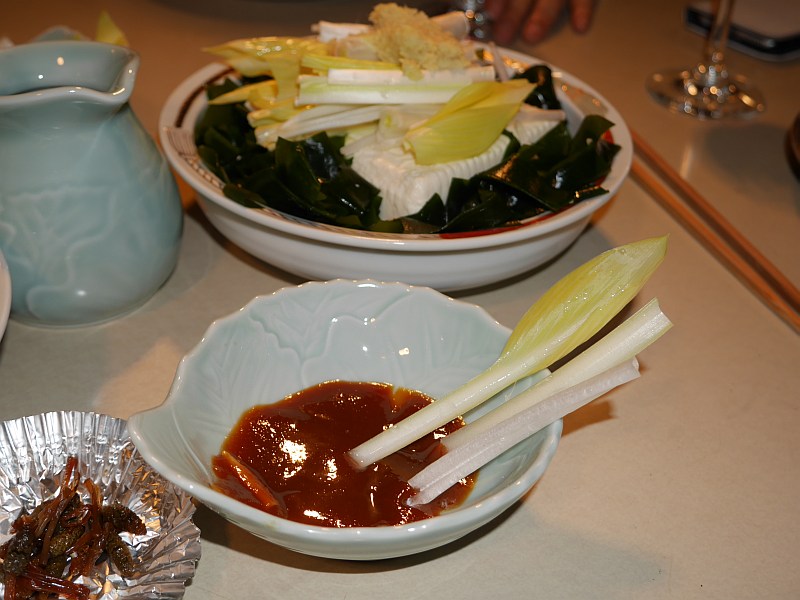Monthly Archives: June 2018
Hosta icicles (yuki urui)
The other day I discovered a long suffering Hosta that I’d covered with a bucket in the spring. Surprisingly the blanched shoots were in good condition despite the warmth. We ate them as a salad with a simple dipping sauce (roasted sesame oil, soy sauce and pepper! And it was delicious, mild tasting, crispy and refreshing, the texture and shape of the leaf reminding my friend of artichoke! The day afterwards, I ate the rest lightly fried with garlic and chili in an omelette with sea kale broccolis! I’m sure you can use any Hosta for this. In Japan, Hosta montana is the main species cultivated for the markets. We found blanched Hosta shoots or urui in all the supermarkets in late march / early april during my study trip to Japan. However, H. montana is not an accepted species name by the Plant List (plantlist.org) and is often given as a variety, H. sieboldiana var montana or var gigantea. However, on the taxonomy account at http://www.hostalibrary.org/species/pdf/species_part1.pdf, it is stated that H. montana is so obviously different from H. sieboldiana that even the average gardener can tell them apart! For this reason, I used H. montana in my book as it is still commonly used in horticulture. For a list of cultivar names known as H. montana, see http://myhostas.be/db/hostas/montana. Hosta undulata is also noted on the Japanese Hosta wiki page as being used. This is no longer accepted as a species and is considered to be a group of cultivars H. “Undulata” (see http://myhostas.be/db/hostas/undulata for a list of cultivars associated with Undulata).
On the Japanese Hosta wiki (translated with Google translate), the main producing area for urui is given as Yamagata prefecture (north of Tokyo on the other side of Honshu), which ship light green young shoots which are used for salads , pickles , stir-fry , with miso sauce , vinegar miso , miso soup , mixed rice , sushi rolls etc. This explains why we didn’t see the production of Hosta during our farm trips south of Tokyo.
The Japanese name is 雪うるい (yuki urui) which means snow leaf or icicles (google the Japanese name to see many pictures). They are produced in darkened greenhouses for an extended season or the rows are mounded outdoors. The production techniques seem to be different judging by the colour of the urui sold in supermarkets.




